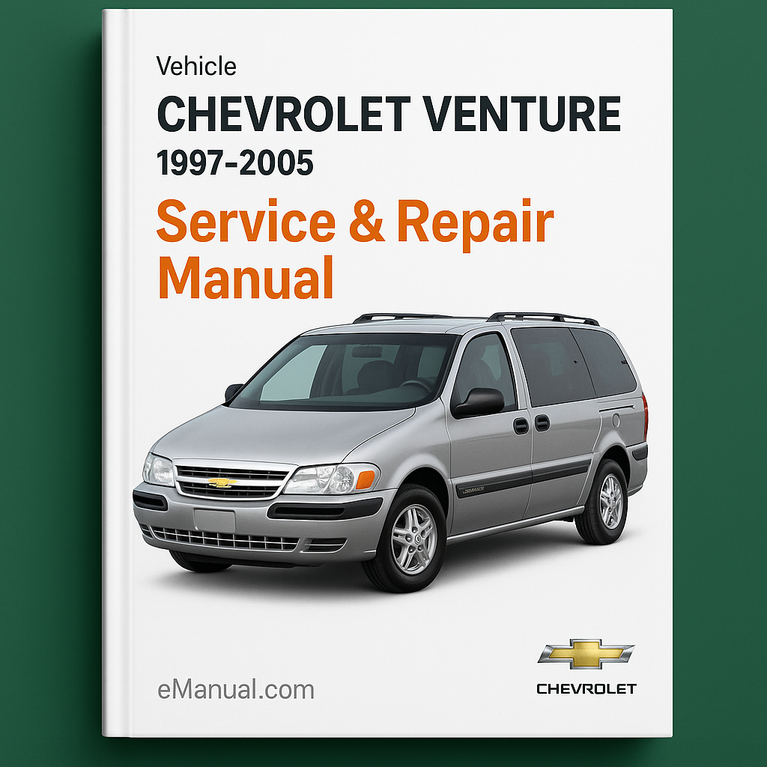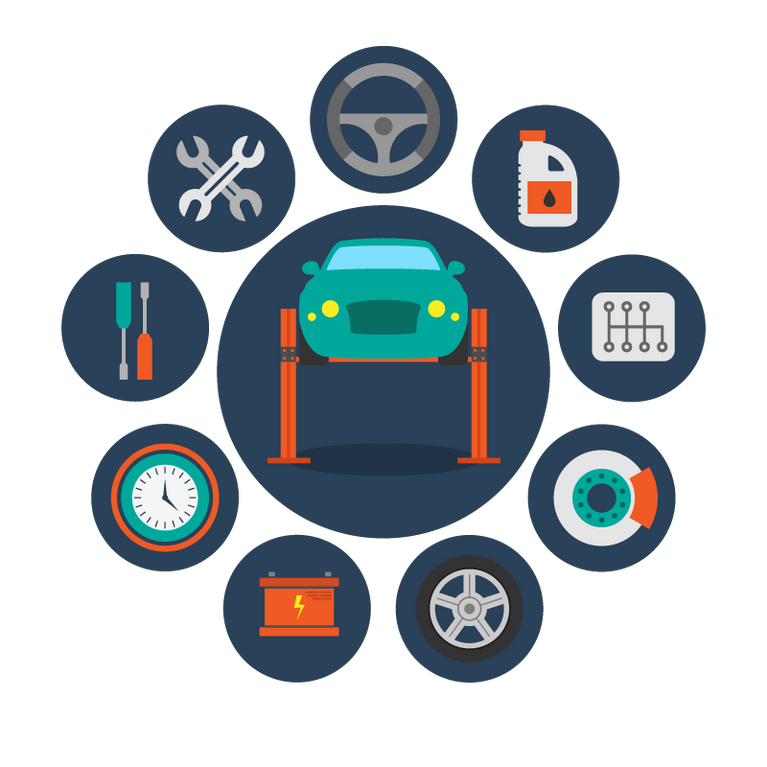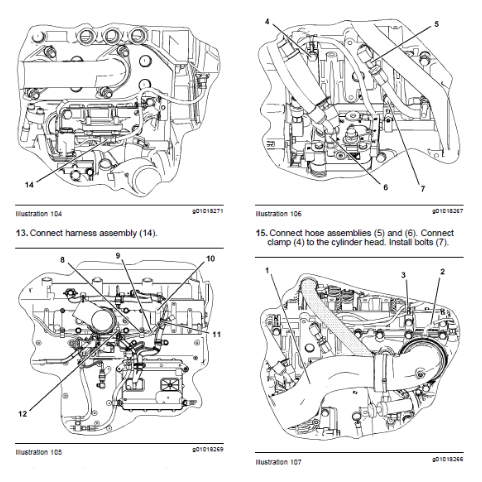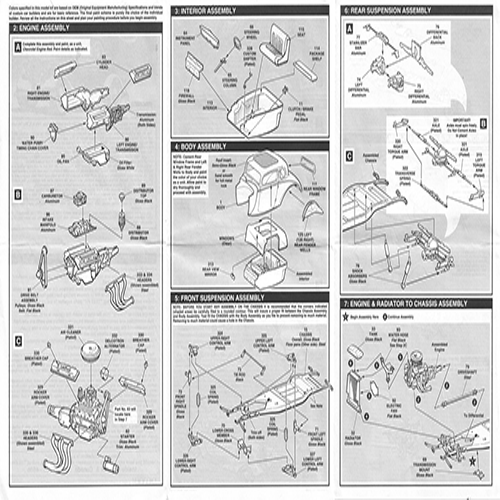Production Years Covered:
1997, 1998, 1999, 2000, 2001, 2002, 2003, 2004, 2005
Vin Chassis Code:
1GNEVC_2
Target Audience:
Families, individuals seeking versatile people and cargo transport
Key Competitors:
Dodge Grand Caravan, Chrysler Town & Country, Ford Windstar, Honda Odyssey, Toyota Sienna
Manual Advantage:
Provides dealer-level repair information, reducing reliance on expensive shop services.
Content Detail:
Hundreds of high-quality photos and illustrations, detailed substeps, numbered instructions, and callouts for critical information.
Accessibility:
Instant download, no shipping delays, accessible on multiple operating systems.
Powertrain:
Engine (internal, external, lubrication, cooling, fuel, emissions), Transmission (automatic, manual), Drivetrain (drive shafts, axles, differentials, transfer cases for AWD models if applicable)
Chassis:
Suspension (front and rear, components, alignment), Steering (power steering, steering column), Brakes (hydraulic, parking brake, ABS, traction control)
Electrical:
Ignition, Starting, Charging, Lighting, Instrumentation, Power Accessories (windows, locks, mirrors), HVAC Controls, Audio/Visual Systems, Wiper/Washer Systems, Horn
Body:
Exterior (doors, hood, glass, mirrors), Interior (seats, instrument panel, trim panels), Restraint Systems (airbags, seat belts)
Control Systems:
Engine Control System, Emission Control System, Cruise Control, Engine Immobilizer, Multiplex/CAN Communication
Maintenance:
Scheduled maintenance, fluid changes, filter replacements, component inspections
Repair:
Step-by-step disassembly, reassembly, and repair of all major components and systems
Troubleshooting:
Diagnostic procedures for various systems, common problem identification
Overhaul:
Detailed procedures for engine and transmission overhauls
Specifications:
Torque specifications, fluid types and capacities, clearances, electrical parameters
Diagnostic Capability:
Advanced diagnostics, including electrical system troubleshooting and wiring diagrams
Repair Complexity:
Suitable for both do-it-yourselfers and experienced mechanics, covering complete disassembly
Engine Type:
3.4L V6 (OHV, 12-valve)
Horsepower:
Approx. 180 hp @ 5200 rpm
Torque:
Approx. 205 lb-ft @ 3200 rpm
Fuel Delivery:
Multi-port Fuel Injection (MPI)
Fuel Type:
Unleaded gasoline
Coolant Type:
Ethylene Glycol (Dex-Cool recommended for later models, consult manual for specific year)
Oil Type:
SAE 5W-30 (check manual for specific year and temperature range)
Oil Capacity:
Approx. 4.5 quarts (with filter)
Transmission Type:
4-speed automatic overdrive
Transmission Model:
GM 4T65-E
Optional Transmission Type:
N/A (all models featured automatic transmission)
Transmission Fluid Type:
Dexron-III (or equivalent, check manual for specific recommendations)
Transmission Fluid Capacity:
Approx. 7.0 quarts (pan removal and refill)
Length:
Approx. 179.7 inches (short wheelbase), 193.7 inches (long wheelbase)
Width:
Approx. 72.5 inches
Height:
Approx. 67.4 inches
Wheelbase:
Approx. 112 inches (short wheelbase), 120 inches (long wheelbase)
Cargo Volume Behind 1St Row:
Varies by wheelbase, typically over 100 cubic feet
Curb Weight:
Approx. 3,700 - 4,200 lbs (depending on configuration)
NHTSA Frontal Impact Driver:
Likely 4-star (based on typical ratings for vehicles of this era, consult specific year NHTSA data if available)
NHTSA Frontal Impact Passenger:
Likely 4-star (based on typical ratings for vehicles of this era, consult specific year NHTSA data if available)
ABS:
Standard on most models, optional on early models
Traction Control:
Optional on some models
Airbags:
Driver and front passenger airbags standard
Seat Belts:
Three-point seat belts for all seating positions
Oil Change Interval:
Typically 3,000 to 5,000 miles, or 6 months, whichever comes first (consult manual for synthetic oil recommendations and specific year)
Transmission Fluid Change Interval:
Typically 50,000 to 100,000 miles, depending on driving conditions (check manual)
Coolant Change Interval:
Initial change at 5 years/100,000 miles, then every 5 years/50,000 miles thereafter (for Dex-Cool, verify with manual)
Power Steering Fluid:
GM power steering fluid or Dexron-III (check manual)
Engine Issues:
Intake manifold gasket leaks, potential for head gasket issues on some engines, rear main seal leaks.
Transmission Issues:
Slipping or delayed engagement, particularly if fluid is neglected. Torque converter clutch issues.
Suspension Issues:
Worn control arm bushings, ball joints, and sway bar links due to vehicle weight and typical use.
Electrical Issues:
Window motor failures, power lock actuator failures, instrument cluster issues, HVAC blower motor resistor failures.
Body Issues:
Rust accumulation, particularly on rocker panels and wheel wells. Door handle failures.
Segment Perception:
Often considered a practical and spacious option in the minivan segment, though not always leading in refinement or reliability.
Consumer Reports Historical Ranking:
Varied across its production run; generally ranked average to below average in reliability and owner satisfaction compared to key competitors.



